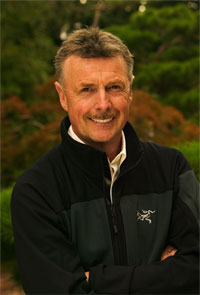
Excerpt from Cox, Rosamund K. (Ed.). (2005). Wildlife Photographer of the Year: Portfolio 15. London: BBC Worldwide Limited.
|
It is no wonder that the rise of the environmental movement began in earnest with the launch of the space program. The image of our fragile, blue Earth floating in limitless space is a compelling one. There are no international boundaries; we are simply one globe hovering in the void—there are no second chances and nowhere else to go. In itself, this should provoke us into acts of conservation. From making the decision to buy local, organic produce to setting up an environmental foundation, each act is important, no matter how small or large. As a nature photographer, I feel both obliged and challenged to elicit this response from people.
The center of a nature photographer's work is the environment. Whether the depiction is natural beauty or human degradation, nature photographs are essentially political documents. These photos have power, sometimes hidden and, some would say, even subversive against the political status quo, that supports and is succored by big-business interests. Unlike any other medium, photographs have the ability to energize the public. Moved by an image of an oil spill along the California coast, a group of lawyers started an environmental organization in 1969 that has since grown into the Natural Resources Defense Council—one of the largest and most successful in the United States. Photography allows millions a glimpse of nature that most will sadly never see in person. Through photography we can study and ultimately save struggling species and the landscapes they inhabit. Exposure to nature images helps us identify with species and engage with the planet—reminds us of our dependencies and interactions and that we cannot think of ourselves as separate, unnatural entities. We are part of the whole systema troublesome part—and we cannot keep ourselves out of nature. When we hurt it, we hurt ourselves, but when we care, we consciously make better choices for the environment and for our communities. Photography may not make the problems we face less overwhelming, but as both art and commentary it lessens the abstraction of habitat and species loss. Can nature photographers do a better job? Of course. There is always a tendency to rest on one's laurels and sink into conservatism with how and what we shoot. We need to stay fresh and aim for the shot that really matters—the shot that goes beyond our previous visions of certain locations, animals, or indigenous human cultures. Just as photographers have a duty to expand the viewer's horizons and to reflect the natural diversity in the world, so publications also have a responsibility to place value on work from underexposed areas. Nearly two million species have been named, with more to be discovered. As a nature photographer since I was a teenager, I have barely scratched the surface, photographing maybe a thousand or so species. When the public sees a constant stream of imagery from the same places of the same animals, it may begin to feel that these are the only ones worth saving. Saving nature has always been exhilarating, frustrating, and controversial. It is becoming more so as conservation is increasingly in conflict with ideas of social justice, human rights, and economic aspirations. Nature photographers help lift environmental activists and their organizations, give them representation through association in books and other products, direct people to them, and even provide a blueprint for activism. As I've made a living from my interest in the natural world, so I feel a need to put more of my energy back for the benefit of the environment. I want to capture the imagination with a photograph. I try to dazzle my audience with extreme beauty, places that are unseen. And each time I go out, I try to do it that little bit better.
|
 Art Wolfe Photo by Kate Baldwin |
